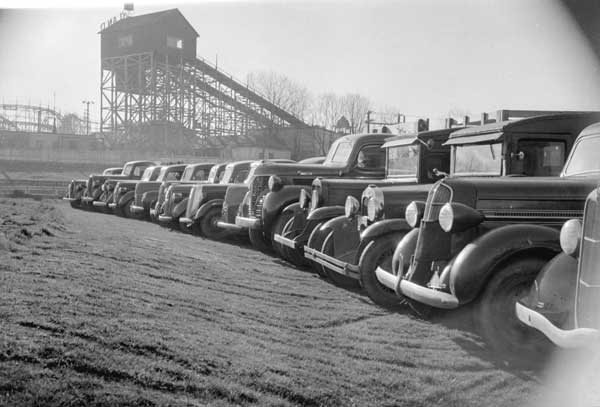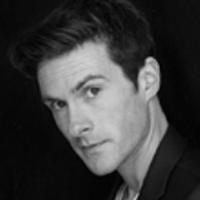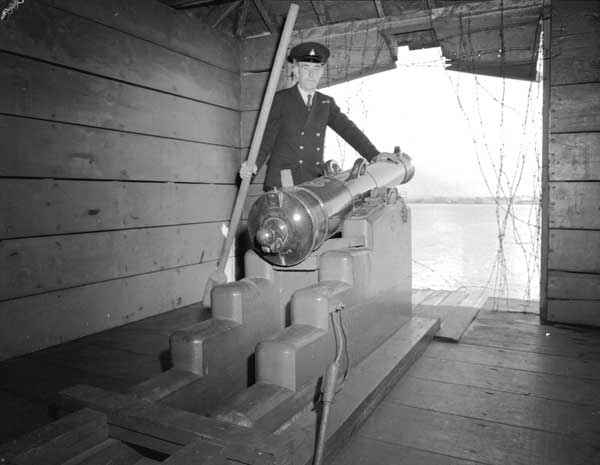[Editor’s note: It may be our shortest month of the year, but February is packed with Vancouver history. With permission from publisher Anvil Press, author Jesse Donaldson highlights five memorable moments from his new book, This Day in Vancouver.]
Feb. 2, 1969: A Stanley Park ransom
Police are baffled and Vancouverites reel following the discovery that the city's famous Nine O'Clock Gun has been kidnapped from its emplacement in Stanley Park.
"It was all done with somebody who had expert knowledge of this kind of thing," explains park board chairman Andy Livingstone in an interview with the Vancouver Sun. "It wasn't somebody going down there and casually taking it."
Because of the precision of the theft -- and because it's Engineering Week -- UBC engineering students are the prime suspects, but concrete leads are scarce. The following morning, a ransom note will arrive at City Hall which reads: "Dear Sir: As you are probably aware, the Nine O'Clock Gun has been kidnapped. If the City of Vancouver wants it back, a photo of our Mayor Tom Campbell or a reasonable substitute should appear in the Vancouver Sun on Tuesday, donating $100 to the Children's Hospital."
Campbell -- a public figure despised by the city's youth -- will not respond to the ransom note, given that he is in the hospital for stomach surgery. And unfortunately, his replacement, acting mayor Hugh Bird, will also not be in a charitable mood.
"The city certainly is not going to start to pay ransoms to people who carry out irresponsible actions," Bird will claim. "It's not the policy of the city to make grants to worthwhile causes because of a ransom note."
Despite the city's refusal to pay the ransom, the Engineering Undergraduate Society (EUS) will raise more than $1,500 in public donations to return the 1,500-pound gun -- all of which will be immediately donated to the Children's Hospital. The gun will be "found" by UBC engineering students four days later, with EUS chairman Fraser Hodge denying any knowledge of the incident. City police are unable to say whether charges will be laid.
"But," says inspector Victor Lake, "a pretty dim view will be taken of the incident."
Feb. 12, 1951: Vancouver's dollar-a-year mayor
After a month of delay, council passes a bylaw allowing Mayor "Friendly" Fred Hume to donate all but a dollar of his annual salary to charity.
"Vancouver now has a dollar-a-year mayor," reports the Vancouver Sun. "The remaining $7,499 will be allocated for miscellaneous grants, social assistance and the mayor's fund so that His Worship will be able to give the money to worthy causes as he requested last month."
The measure, which passes by a vote of five to three, allows the mayor -- already a millionaire as the head of his own electrical contracting firm -- to distribute the majority of his $7,500 annual salary to charities as grants or in the form of social assistance. Despite Hume's best intentions, the move is heavily criticized by other city officials, such as aldermen Bert Showler, R.K. Gervin and Archie Proctor. Proctor in particular chides the mayor in council, criticizing him for setting a "dangerous precedent... embarrassing to future mayors and aldermen."
"When I decided to give my services to the city and suggested that the money could help less fortunate people, I didn't expect to be the butt of sarcasm and dirty letters," Hume thunders. "I don't like it. It's up to the next mayor what he does with his salary. If he can afford to give it away, God bless him. If he can't, that's his business. That's the way I feel. This is my business -- it's none of yours."
Hume will go on to become one of Vancouver's most popular mayors, serving for a further seven years, and for the remainder of his career, he will refuse to collect any more than a dollar a year.
Feb. 15, 1965: Raising a new flag
At exactly noon at Jericho Air Force Base, Canada's new flag is unfolded and raised, making it the first ceremonial raising of the Maple Leaf anywhere in the country.
"Four trumpeters, using yard long ceremonial trumpets, gave a flourish for the new nylon flag as 300 army and air force personnel stood smartly to attention," reports the Vancouver Province. "Capt. Roy Forbes read the flag proclamation. [Two chaplains] blessed the two Red Ensigns as they came down and a neatly folded the new Maple Leaf flag on a pillow."
The Red Ensign has been Canada's official flag since 1946, though it had been used in an informal capacity for close to 80 years and was promoted by such figures as prime minister John A. Macdonald. Before that, the official flag was simply the Union Jack.
"If our nation, by God's grace, endures a thousand years, this day, the 15th day of February, 1965, will always be remembered as a milestone in Canada's national progress," Prime Minister Lester Pearson will say during his public address in Ottawa. "It is impossible for me not to be deeply moved on such an occasion or to be insensible to the honour and privilege of taking part in it."
"God Bless our flag!" he will conclude, "and God Bless Canada!"
The only flags raised before the Jericho ceremony were in Victoria (at sunrise) and at UBC (where it was quietly hoisted at 7:15 a.m.); however, neither of these events was marked by any form of celebration.
"All vessels in the harbour switched to the Maple Leaf flag," reports the Province, "except those who had none. They were ordered to fly no flags."
Vancouver schools and other civic institutions have yet to raise the new flag because, unfortunately, very few are available in British Columbia.
"They are expected," the paper reports, "within weeks."
Feb. 16, 1966: An 'otherworldly' donation
Local dailies rejoice with the news that, after several days of furious debate, council has decided to accept an anonymous $1.5-million donation to furnish the city with its own planetarium.
"The decision came after a fight-filled 75 minutes of debate in which council also officially accepted the offer of the anonymous donor who wants to build the planetarium for the city," reports the Vancouver Sun, and "approved appointment of museum architect Gerald Hamilton for the planetarium job as well."
The dispute, which will continue to simmer in the days to come, revolves around the location of the proposed space centre. While Mayor Bill Rathie favours the development of a former RCAF base located near the foot of the Burrard Street Bridge, a similar $1-million donation was recently offered to the Park Board for the construction of a conservatory, woods museum and planetarium at Little Mountain.
"A planetarium is a dome-shaped building in which the constellations are projected on the ceiling from a special machine," reports the Feb. 14 edition of the Vancouver Sun. "The visitors, who are seated, can be given the impression of riding through space."
By the end of 1966, the location of the new planetarium will be settled, once it is combined with a $3.5-million cultural complex intended for the Kitsilano RCAF facility as part of a city centennial project.
Though the donor of the grant will originally elect to remain anonymous, by September he will have been revealed as lumber millionaire H.R. MacMillan, whose conditions for giving a grant to the facility include the inclusion of at least 300 seats, a land donation from the city, and a provision that only the finest instruments be purchased (with, for reasons unexplained, preference given to equipment manufactured in Japan).
The H.R. MacMillan Planetarium will open in October 1968 and, within two months, will have proved so popular with the public, it will have surpassed all economic estimates.
Feb. 26, 1942: Japanese internment begins
"Trend of the Times in Vancouver!" declares a joyous headline on the front page of the Vancouver Province as, following the adoption of Order-in-Council P.C. 1486 two days earlier, an order is sent from Justice Minister Louis St. Laurent to remove and intern the more than 21,000 members of British Columbia's Japanese population.

"Without fuss or friction, a change that may have a significant bearing on British Columbia's future is taking place in Vancouver," reports the Sun. "The Japanese are moving out, and Canadians are moving in. There are new faces behind the counters in establishments formerly operated by Nipponese, and it is expected their number will increase as the exodus from the coast gathers momentum."
The order, approved by Prime Minister Mackenzie King, is based heavily upon the recommendations of Vancouver Centre MP Ian Mackenzie (a vocal supporter of anti-Asian organizations such as the White Canada Movement), and is issued despite assurances from the country's top police and military leaders that there is no danger of either Japanese sabotage or a Pacific Coast invasion.
"Every person of the Japanese race shall leave the protected area aforesaid forthwith," the order declares, in addition to establishing a dusk-to-dawn curfew and restrictions on Japanese possession of automobiles, cameras and radio equipment.
"The presence of thousands of Japanese on the Pacific Coast adds enormously to the dangers of hostile attacks which may be made very soon," states a resolution sent to Ottawa by the Vancouver Real Estate Exchange, urging internment as soon as possible.
"It is generally recognized that it is the intention of many of the Japanese to support their countrymen in the event of an invasion." Within weeks, Vancouver's Japanese citizens will have their property confiscated and they will be placed in internment camps elsewhere in B.C. There, they will spend the next three and a half years living in stables, barnyards and subhuman environments, while the "Custodian of Aliens" auction off their clothes, homes and personal property -- often at below market value.
"It is the government's plan to get these people out of B.C. as fast as possible," Mackenzie will later explain. "It is my personal intention, as long as I remain in public life, to see they never come back here. Let our slogan be for British Columbia: 'No Japs from the Rockies to the seas.'"
At the end of the war, those interned will be offered two choices: deportation, or transfer to another province. When total financial losses to Japanese Canadian citizens are calculated in 1986, the number will exceed $400 million.
Want more Vancouver history, all day, every day, and to support indie journalism at the same time? We've got two signed copies of This Day in Vancouver to raffle off to folks who become Tyee Builders. To sign-up, go to this registration page.
Contest closes Friday. ![]()
Read more: BC Politics, Municipal Politics
















Tyee Commenting Guidelines
Comments that violate guidelines risk being deleted, and violations may result in a temporary or permanent user ban. Maintain the spirit of good conversation to stay in the discussion.
*Please note The Tyee is not a forum for spreading misinformation about COVID-19, denying its existence or minimizing its risk to public health.
Do:
Do not: